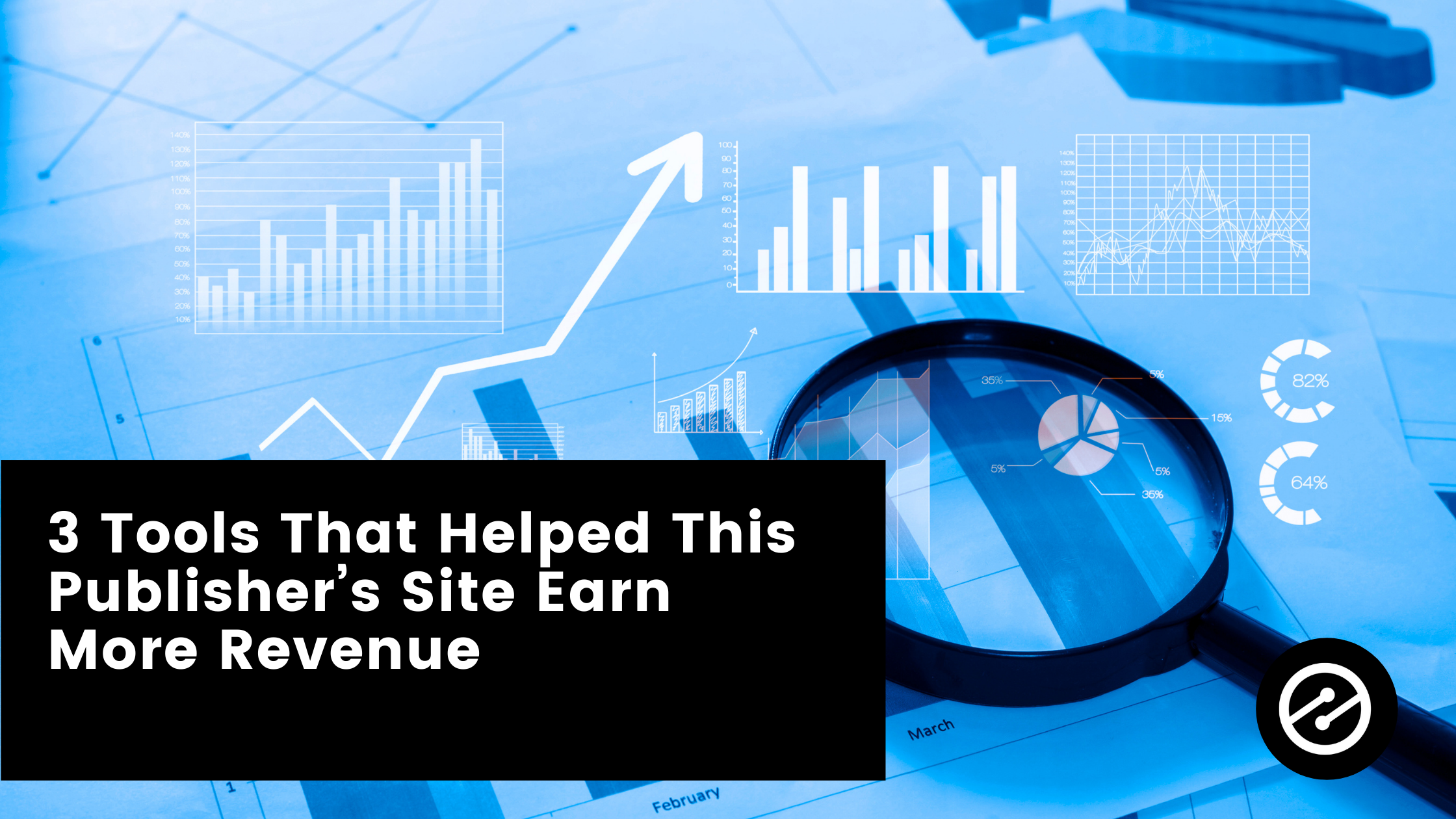
See the 3 Tools That Helped This Publisher’s Site Earn More Revenue

Get helpful updates in your inbox
Ezoic users mainly know it as an ad platform to monetize their website. While that is true, in actuality, Ezoic is a holistic monetization platform that offers a suite of tools to improve the experience on your site and in turn, earn you more revenue.
There are several key tools I used in my time as an Ezoic user that became critical for my website’s earnings. Here is a run down:
1. Leap
Leap, which has now been rolled out to all sites that monetize through Ezoic, is a free tool that lets site owners boost their download speeds while also optimizing for Core Web Vitals.
For those unfamiliar with Core Web Vitals, I recommend reading Google’s handy guide. Overall, download speed and Core Web Vitals are both important and will improve conversion rates (and thus ad revenue) on your site.
Core Web Vitals however is an SEO ranking factor (pure speed as measured in the page speed insights report is not). Having poor Core Web Vitals can cause your site to lose out on keyword rankings, which can have a significant effect on your revenue.
Improving Core Web Vital scores is usually an expensive and time consuming endeavor — especially for independent publishers who don’t have dev teams — such as myself. The Leap tool optimizes your site for free and gets your Core Web Vital scores to a place where you won’t have to worry about Google knocking down your site.
2. Big Data Analytics
There are many first-party tools that are great at segmenting your site data — Ezoic’s Big Data Analytics (BDA), however, goes even further. Starting with the basics, BDA has all the same functionality of Google Analytics and Google Search Console — but the data is all in one place.
You’ll be able to see which pages are getting the most traffic, which keywords are getting the most traffic, where your traffic is coming from and what channels are driving the most traffic. Where Ezoic’s Big Data Analytics really shines is its ability to tie your SEO efforts with earnings.
Revenue Data
One of the features of BDA that blew my mind (because you can’t find it anywhere else) was seeing revenue data at the query level, all in one place. Going into the “SEO” section of your dashboard, and then selecting “Search Console,” you’ll find a report that shows how much revenue per thousand visits a query is generating. As a publisher, this data is invaluable.
Determining which types of searches are generating revenue (a proxy for which keywords are engaging readers the most) informs your future content strategy. A real-life example would be finding “how to” articles don’t generate revenue while “best of” articles generate far more revenue.
A publisher can take that insight and focus future content campaigns on “best of” articles instead of “how to” articles, thus earning them more revenue.
Authors, Word Counts & Categories
In addition to revenue data down to the keyword, BDA also lets you see how content is performing based on who wrote it, how long it is and even what category of content it is. Like with the revenue data, these insights are invaluable in how they can shape your future content strategy.
3. Tag Tester
Another free (but usually very expensive elsewhere) feature from Ezoic is A/B testing SEO titles in SERPs. A strong title is sometimes the difference between getting 10% of SERP traffic or 20% of it. Titles are the first thing searchers see and when Google is showing six or seven of the same type of result — it can mean the difference between your page being clicked on or your competitor’s site.
Ezoic’s A/B tester takes out the uncertainty of what titles will perform strongest for you. Simply run a test with one or more variants of your title and let Ezoic do the work. From your dashboard, go to the SEO icon and you’ll find “Tag Tester.”
Here you can test the performance of titles for your content. For example, say you wanted to test your “best xyz for runners” article, you could test “10 best xyz”, “The top xyz” or “Here are the best xyz.” You would set up the test and then come back in a few weeks (or months depending on how much traffic the page being tested receives).
When the test is completed, Ezoic’s platform will tell you the winner based on statistically significant increases in traffic and click through rates for a certain title.
Final Thoughts
At the end of the day, Ezoic is a technology platform to help your site earn more revenue. Even without any of these features, it will still accomplish that goal. However, learning how to use Leap, Big Data Analytics, and the SEO Tag Tester tool is a simple, free and effective way to boost revenue even more with Ezoic.

Craig Casazza, former owner of <a href="http://thecostguys.com/" rel="noopener noreferrer">TheCostGuys.com</a>, is an independent publisher and SEO Director for Ayima. Craig is a former Associate Director of SEO at FIG and SmartAsset.
Featured Content
Checkout this popular and trending content

Ranking In Universal Search Results: Video Is The Secret
See how Flickify can become the ultimate SEO hack for sites missing out on rankings because of a lack of video.
Announcement

Ezoic Edge: The Fastest Way To Load Pages. Period.
Ezoic announces an industry-first edge content delivery network for websites and creators; bringing the fastest pages on the web to Ezoic publishers.
Launch

Ezoic Unveils New Enterprise Program: Empowering Creators to Scale and Succeed
Ezoic recently announced a higher level designed for publishers that have reached that ultimate stage of growth. See what it means for Ezoic users.
Announcement
